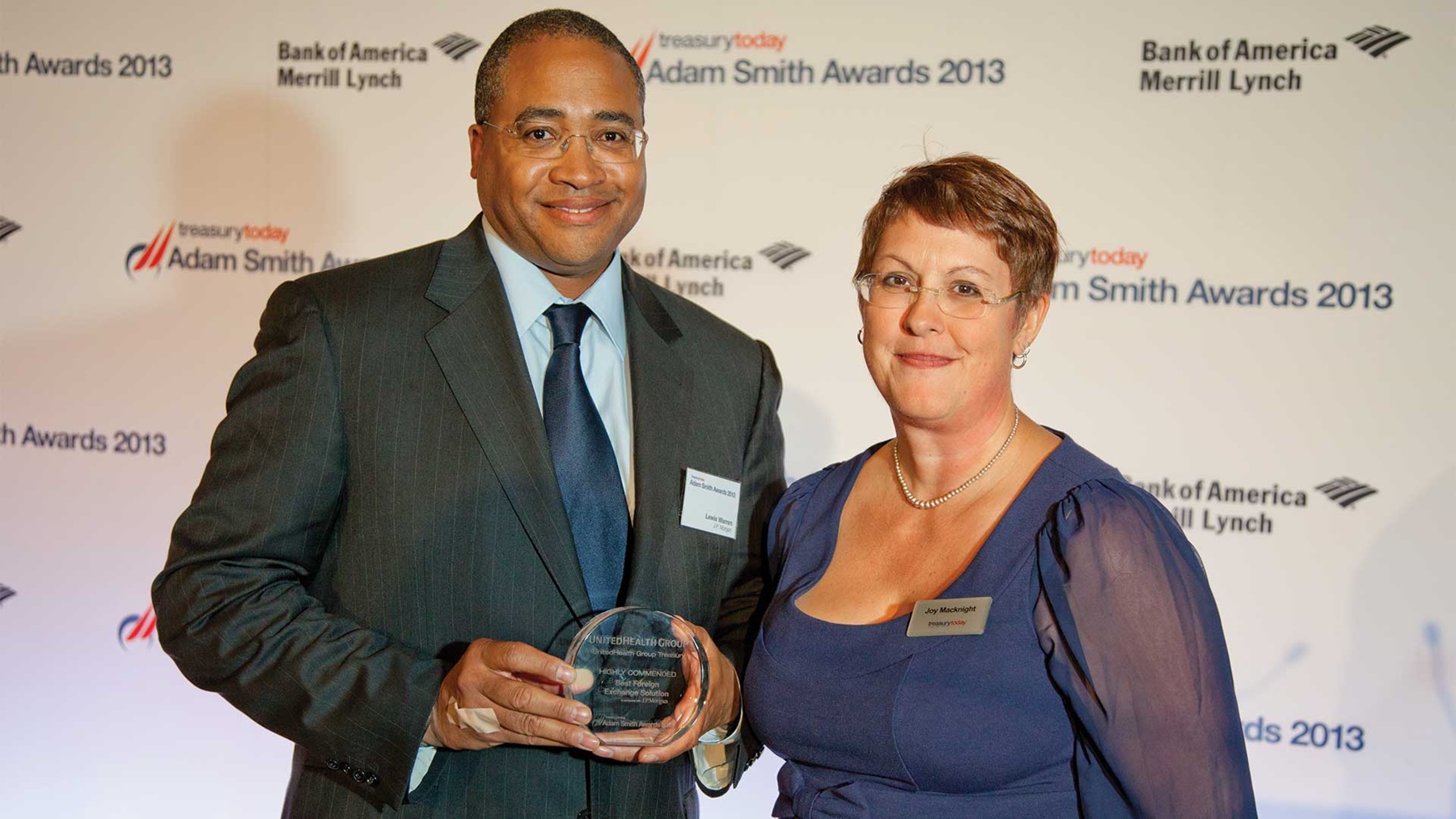
Photo of Lewis Warren, J.P. Morgan collecting on behalf of UnitedHealth Group and Joy Macknight.
This case study showcases a FX solution to satisfy UnitedHealth Group’s acquisition of Amil, the largest private healthcare provider in Brazil. The initial phase of the transaction would result in the company facing a $5.5 billion equivalent of Brazilian Real exposure. Read how the company managed this exposure.
UnitedHealth Group Incorporated
Minnetonka, US

in partnership with

UnitedHealth Group Incorporated has been looking at international expansion for a number of years. Brazil has been an area of focus given its favorable economic and demographic development and composition. In the fourth quarter of 2012 UnitedHealth group announced the purchase of Amil, the largest private healthcare provider in Brazil. This transaction was UnitedHealth Group’s largest acquisition in the international arena.
UnitedHealth Group was focused on managing its exposure to currency movements relative to the transaction over an uncertain period of time between announcement, regulatory approval and closing driven by the non-deliverability and volatility of the Brazilian Real and the-then recent sovereign intervention in the foreign currency markets.
The UnitedHealth Group treasury team worked with J.P. Morgan to execute a large FX collar to hedge its purchase price against currency fluctuations. The $5.5 billion-equivalent transaction was conducted in two phases in recognising market liquidity and confidentiality. UnitedHealth Group further prepared for the approval of the acquisition by executing a physical currency hedge. Transferring $1.8 billion US dollars to Brazil and converting it to Brazilian real in the spot market ensured that the company was prepared to execute the second phase of the transaction efficiently in local currency.
In addition to the movement and hedging of foreign currency, the UnitedHealth Group treasury team tapped the US bank market for a $3 billion bridge facility to provide certainty of execution; the US dollar bond market for funding; extended by one year its existing five-year bank facility, and executed a new $1 billion 364-day bank facility. The latter two transactions increased UnitedHealth’s commercial paper programme to $4 billion. All of these 18activities were accomplished within the fourth quarter of 2012.
In addition, in interfacing with the credit rating agencies, UnitedHealth Group was able to satisfy their questions over its temporary increase in leverage related to the transaction, through the strong cash flow generated by its diversified business model, and its currency exposure and movements through the use of FX collars, which covered two-thirds of the purchase price.
UnitedHealth Group’s acquisition of Amil is an important transaction in UnitedHealth Group’s corporate history. UnitedHealth Group’s coordinated effort in its cash management, capital markets, legal, tax, finance and operations teams in the US and Brazil enabled the firm to manage its risks in a confidential, efficient and collective manner.